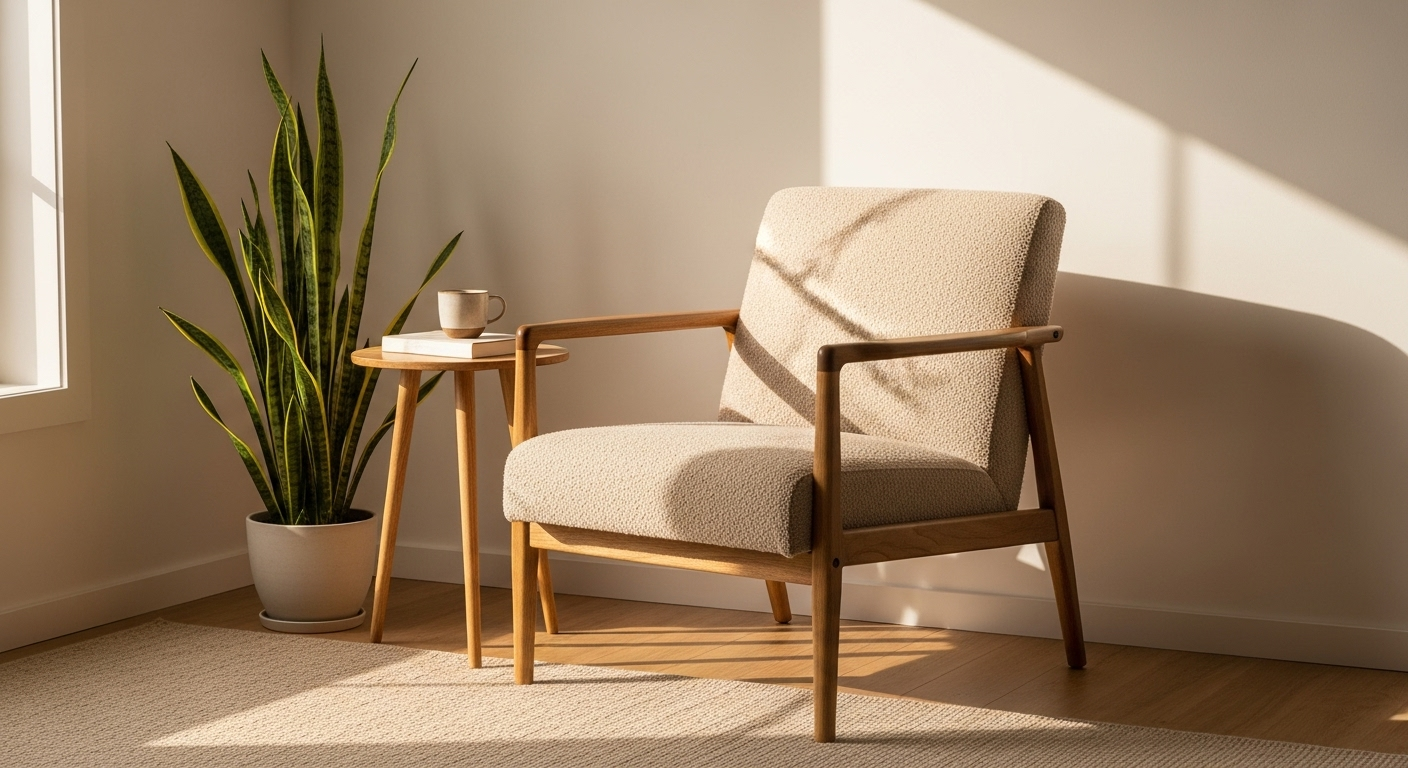
For the longest time, American decorating felt like it was yelling at you. More throw pillows! A gallery wall with 57 frames! A different knick-knack for every conceivable surface! Our homes were loud, stuffed to the gills with… well, stuff. And we were told this was cozy. This was personality.
But something has shifted. Maybe it was the pandemic forcing us to actually live in our cluttered spaces 24/7. Maybe it’s a collective burnout from our hyper-consumerist, always-on lives. Whatever the reason, a new kind of cozy has taken hold. It’s quieter. It’s calmer. It’s a design philosophy that’s less about what you add, and more about what you take away. And it’s not the cold, sterile, all-white-box minimalism you might be thinking of.
This is warm minimalism. It’s about creating a sanctuary, not a showroom. It’s the design equivalent of a deep, calming breath. And after years of watching it bubble up, I can tell you these are the ideas that are truly defining the look in American homes right now.
The Foundation: It’s All About Texture, Not Color
The old minimalism was obsessed with stark white and gray. The new minimalism is all about building a symphony of textures in a very tight, neutral color palette. This is the absolute key to making a spare space feel warm and inviting, not empty.
Think about a single room. Instead of adding a pop of color, you add a “pop of texture.” The nubby weave of a bouclé armchair. The smooth, cool feel of a marble coffee table. The rough-hewn grain of a reclaimed wood shelf. The soft fluff of a sheepskin rug on the floor. A chunky knit throw blanket. When your color palette is restrained (think creams, beiges, oatmeals, and soft browns), your sense of touch takes over. This textured minimalism is the secret sauce that makes it all work.
Concealed Everything: The Art of Smart Storage
Let’s be real: life is messy. We have mail, and keys, and phone chargers, and all the other detritus of daily existence. A successful minimalist home isn’t about not owning things; it’s about having a smart place to put them. Minimalist storage solutions are your secret weapon.
This means investing in furniture with hidden storage. An ottoman that opens up. A media console with solid doors instead of open shelves. Beautiful woven baskets to toss clutter into. The goal is to create a calm, serene visual plane by hiding the chaos. Your home looks peaceful because the mess is cleverly organized just out of sight. This organization is a form of self-care, as essential as managing your finances or understanding complex global issues, like the U.S.-China trade truce.
This isn’t about deprivation. It’s about intention. It’s a conscious choice to surround yourself only with things that serve a purpose or bring you joy. And in a world that is constantly screaming for our attention, coming home to a space that is quiet, calm, and beautiful isn’t just a design choice—it’s an act of radical self-care.
Frequently Asked Questions (FAQs)
How can I make minimalism work if I have kids and pets?
This is the ultimate stress test! The key is durable materials and, most importantly, smart storage. Think washable slipcovers on sofas, rugs made from durable natural fibers like jute, and a heavy reliance on baskets and storage ottomans. A “10-minute tidy” at the end of the day, where everything gets tossed back into its designated basket or bin, is your best friend. It’s not about being perfectly tidy 24/7; it’s about having a system to quickly restore order.
Minimalism seems expensive. All that designer furniture…
It can be, but it doesn’t have to be. The core principle of minimalism is “buy less, but buy better.” Instead of buying five cheap, trendy decor items, you save up and buy one timeless, well-made piece that you will love for years. Thrifting and shopping secondhand are also fantastic ways to find unique, high-quality pieces with character. It’s about shifting your mindset from quantity to quality.
My partner is a maximalist. How do we compromise?
The age-old dilemma! The best approach is to designate zones. Maybe the living room stays calm and minimalist, but their home office or a specific corner can be their “maximalist sanctuary” where they can display their collections and surround themselves with the things they love. It’s about mutual respect for each other’s need for comfort and visual peace.
How do I start decluttering without getting totally overwhelmed?
Don’t try to do the whole house at once. Start with one, tiny, manageable space—a single drawer in your kitchen, your nightstand, one shelf of a bookcase. The feeling of accomplishment from clearing that one small area will give you the momentum to tackle the next. The “one in, one out” rule is also great for maintenance: for every new thing you bring into your home, one old thing has to leave.




